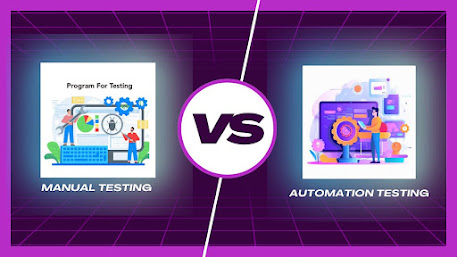In the ever-evolving world of software development, the quality assurance process plays a pivotal role in ensuring the delivery of reliable and bug-free software.
Two distinct approaches have dominated this arena for quite some time: Manual Testing and Automation Testing. These methodologies represent a profound dichotomy in the world of software testing.
While both have their merits and demerits, understanding their nuances is essential for software testing services companies and professionals. In this article, we will delve into the world of Manual and Automation Testing, exploring the dichotomies, and shedding light on the role of Regression Testing in Software Testing.
Manual Testing: The Human Touch
Manual Testing, as the name suggests, relies heavily on human testers who meticulously execute test cases without the aid of automation tools. It is a traditional approach that has been the backbone of software testing for decades. Here are some key aspects of Manual Testing:
Human-Centric:
Manual Testing is a human-centric process that requires skilled testers who can simulate real-world scenarios and interactions with the software. Testers play a crucial role in identifying bugs, usability issues, and other anomalies.
Exploratory Testing:
Testers have the freedom to explore the software intuitively, making it an ideal choice for uncovering unexpected issues. This exploratory approach is difficult to replicate in automation testing.
Initial Testing:
It is particularly effective during the initial stages of software development when the software is evolving rapidly. Manual testers can adapt quickly to changes and perform ad-hoc testing as needed.
Usability and UI Testing:
Manual testing excels in evaluating the user interface (UI) and user experience (UX) aspects of the software. Testers can provide valuable feedback on design and usability.
Ideal for Smaller Projects:
Manual testing is cost-effective for smaller projects or projects with frequently changing requirements, where the automation setup time might not be justified.
Automation Testing: Speed and Efficiency
Automation Testing, on the other hand, involves the use of specialized testing tools and scripts to execute test cases. It aims to increase testing efficiency and reduce manual intervention. Here are the key aspects of Automation Testing:
Script-Driven:
Automation Testing relies on predefined scripts and test cases, making it highly repeatable and efficient. Testers create scripts that can be executed multiple times without variation.
Regression Testing:
One of the primary use cases for automation testing is Regression Testing in Software Testing. It allows quick and thorough testing of previously developed features to ensure that new changes have not introduced regressions.
Large-Scale Testing:
Automation is ideal for projects with large codebases and extensive test suites. It can execute a high volume of test cases in a fraction of the time it would take manually.
Data-Driven Testing:
Automation allows for data-driven testing, where test cases can be executed with various data inputs to assess different scenarios and edge cases.
Continuous Integration:
Automation seamlessly integrates with continuous integration and continuous delivery (CI/CD) pipelines, ensuring that tests are automatically executed whenever changes are made to the codebase.
Dichotomies in Software Testing: Making the Choice
The choice between Manual and Automation Testing is not always straightforward. Several factors should be considered when deciding which approach to adopt:
Project Complexity:
For relatively simple projects or projects with rapidly changing requirements, Manual Testing may be more practical. Automation is better suited for complex, long-term projects.
Budget Constraints:
Manual Testing is generally more cost-effective upfront, whereas Automation Testing requires an initial investment in test script development and automation tools.
Testing Objectives:
Consider the testing objectives. If you need to perform extensive Regression Testing in Software Testing, automation is the way to go. For usability and exploratory testing, manual testing is more suitable.
Time Constraints:
Automation Testing is faster and more efficient for executing a large number of test cases. If time is a critical factor, automation may be necessary.
Skillset:
Assess the skillset of your testing team. Manual testing requires strong domain knowledge and exploratory skills, while automation testing demands proficiency in scripting and automation tools.
Combination Approach:
In many cases, a combination of both manual and automation testing is the most practical solution. Manual testing can be used for exploratory testing and usability assessment, while automation handles repetitive tasks and Regression Testing in Software Testing.
In conclusion, the choice between Manual and Automation Testing is not about one being better than the other but about selecting the most appropriate approach for your specific project and testing goals. Software testing services companies must carefully evaluate the requirements, budget, and timelines to make an informed decision. In an ideal scenario, a balanced combination of both manual and automation testing can lead to more effective software quality assurance and better end-user experiences.
Related Content - How business intelligence brings benefits for your business in 2023?

